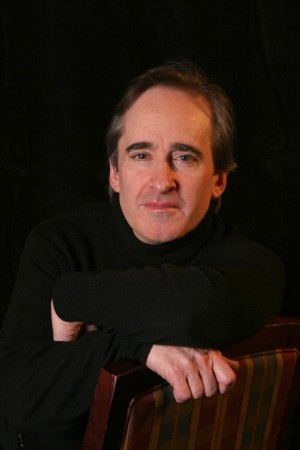
Berlioz Requiem Returns to the May Festival
Hector
Berlioz’ Grande messe des morts (Requiem
Mass) calls for large forces. Performing at the premiere in Paris in 1837 were
190 instrumentalists and 210 singers.

However, it also has moments of quiet and intimacy. Friday evening’s May Festival performance of the Requiem in Cincinnati’s Music Hall fit those parameters and everything in between.
It was a superbly musical performance that both stunned and caressed the ear, depending on the needs of the text, which is based on the Roman Catholic Mass for the Dead.
May Festival music director James Conlon led the combined May Festival Chorus and Vocal Arts Ensemble (129 singers) and the Cincinnati Symphony Orchestra (109 players, including four brass choirs seated beside and behind the orchestra on the Music Hall stage.) It was quite an array and a reminder of why the Berlioz Requiem is not heard more often (it had only been performed twice at the May Festival in the past 35 years, said Conlon, in remarks before the performance).
Tenor soloist was Barry Banks.
Precision and ensemble unity were remarkable throughout the performance, with the Latin text clearly enunciated. This was notable from the outset in the opening “Requiem et Kyrie.”
The “Dies Irae” built bar by bar to its huge climax, with the entire company, including six timpanists (addressing 16 drums), joining in Berlioz’ mighty vision of the Day of Judgment.
By contrast, “Quid sum miser” was soft and plaintive, with the CSO’s Christopher Philpotts on English horn.
Berlioz was one of the great orchestrators and the effects he calls for in the Requiem were beautifully realized throughout the performance. For example, the wonderful dark colors (bassoons, etc.) on “Libera me de ore leonis” (“Deliver me from the lion’s mouth”).
Conlon laid down his baton to conduct the Chorus in the soft, pleading (unaccompanied) “Quaerens Me.”
At the center of the Requiem is the “Lacrymosa,” with its slashing strings. Conlon began it softly and built to a blazing climax, punctuated by all six timpanists and bass drum.
Berlioz constructs the Offertorium on a pair of repeated notes sung by the Chorus for a very moving effect. It was as if the sun came out on “promisisti,” as they sang of God’s promise to “Abraham and his seed forever.”
The men’s voices rendered “Hostias”with great beauty as again, it was time to marvel at Berlioz’ use of tone color with its recurrent trombone/flute halos.
“Sanctus” was another ineffable moment, with tenor Banks singing from the gallery, his words echoed softly by bass drum and cymbal. The Chorus’ fugal “Hosannas,” accompanied by the CSO, made for a glorious ending.
“Agnus Dei” brought the Requiem to a tender close. “Requiem aeternam dona defunctis Domine, et lux perpetua luceat eis” (“Grant the dead eternal rest, O Lord, and may eternal light shine upon them") sang the Chorus, as material from the opening movement returned. Chorus and orchestra soared thrillingly on “luceat.”
The ending was sublime, with the Chorus sounding “Amen” to timpani accents and cascading figures in the strings.
The May Festival continues at 8 p.m. tonight at Music Hall with an all-Russian program, including the Symphony No. 13 in B-flat Minor by Dmitri Shostakovich. Tickets at 513-381-3300, or visit www.mayfestival.com